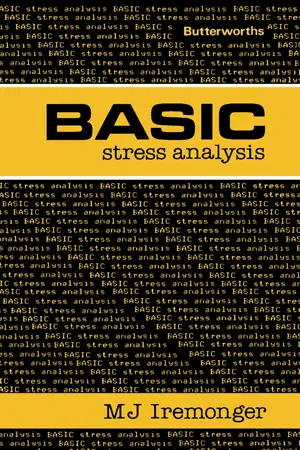Basic Stress Analysis
About this book
BASIC Stress Analysis aims to help students to become proficient at BASIC programming by actually using it in an important engineering subject. It also enables the student to use computing as a means of learning stress analysis because writing a program is analogous to teaching—it is necessary to understand the subject matter. The book begins by introducing the BASIC approach and the concept of stress analysis at first- and second-year undergraduate level. Subsequent chapters contain a summary of relevant theory, worked examples containing computer programs, and a set of problems. Topics covered include direct stress and strain; shear and torsion; bending; complex stress and strain; failure; and axisymmetric systems. Each chapter includes worked examples that are posed as questions. A listing of a possible program is given followed by an example of its output and some ""Program Notes."" These notes explain the structure of the program and how it utilizes the stress analysis theory.
Frequently asked questions
- Essential is ideal for learners and professionals who enjoy exploring a wide range of subjects. Access the Essential Library with 800,000+ trusted titles and best-sellers across business, personal growth, and the humanities. Includes unlimited reading time and Standard Read Aloud voice.
- Complete: Perfect for advanced learners and researchers needing full, unrestricted access. Unlock 1.4M+ books across hundreds of subjects, including academic and specialized titles. The Complete Plan also includes advanced features like Premium Read Aloud and Research Assistant.
Please note we cannot support devices running on iOS 13 and Android 7 or earlier. Learn more about using the app.
Information
Table of contents
- Front Cover
- Basic Stress Analysis
- Copyright Page
- Table of Contents
- Preface
- Principal stress analysis notation
- Chapter 1. Introduction to BASIC
- Chapter 2. Introduction to stress analysis
- Chapter 3. Direct stress and strain
- Chapter 4. Shear and torsion
- Chapter 5. Bending
- Chapter 6. Complex stress and strain
- Chapter 7. Failure
- Chapter 8. Axisymmetric systems
- Index
